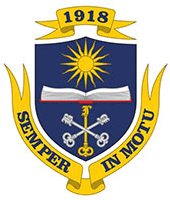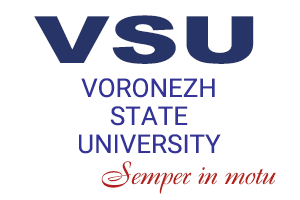AREAS OF RESEARCH
Areas of Research
There are 28 major research areas in VSU, which correspond to all the research areas of the Classic Universities.
Most prominent results of the scientific research:
Biophotonics
- hybrid nanostructures from colloid quantum dots and dye molecules with size-controlled optical properties were developed. It was established that they can be used as singlet oxygen photosensitisers for photodynamic therapy of cancer and other serious human diseases
Radiophysics and Electronics
- the method of controllable sub-nanosecond impulse generation used in radioelectronic precision-guided radar and communications systems development was worked out
Materials Science
- formation methods of controllable nanocomposite materials for modern micro- and nanoelectronics were developed
Mathematics
- results in a number of nonlinear analysis problems were obtained, e.g. in studying of resolvability and qualitative behaviour of solutions in various tasks for non-Newtonian hydrodynamics mathematical models potentially productive for medical, chemical industries, e.g. for polymers production, etc.
Chemistry
- inventive methodology for multicomponent molecular design of structurally diversified semifunctional heterocyclic systems with wide range of application was developed: fine organic synthesis (possibility to use methods developed for almost any reagent combination);
- medicinal chemistry (creation of combinatorial libraries for screening and preclinical trial of biologically active substances); materials science (oxidation retarders for oil products and polymer materials, corrosion inhibitors); nanotechnologies (directed modification of nanomaterials and biosensors by heterocyclic compounds);
- purification methods of sewage water produced as a result of microbiologic amino acid synthesis, sugar production sewage waters and vegetable oils waste with ion-exchange resins were developed and tested; sensors with molecularly imprinted polymers for selective determination of physiologically active substances in various media potentially productive for pharmacy, chemical and food industries, etc. were developed
Physico-chemical Biology
- fundamentally new knowledge was acquired about the role of reactive oxygen intermediates in adaptive responses development, development of pathologies of various origin and cell signalling system. The possibility of application of superoxide radical induction in pathologies of various diseases was analysed
Geology
- a map of metallogenic provinces and ore districts in the PreCambrian basement of Central Russia (within the borders of the Voronezh crystalline massif) was compiled. The map provides an overview of the territory under study, marks the borders of the main reproduction zones within the major structural-formational zones, and give a preliminary estimate of the territory's size
Geology
- a model of optimum utilization of mineral resources base under severe exposure to anthropogenic factors (for Central Black Soil Region) was developed. The model demonstrates the state of the region's mineral resources base and makes it possible to establish short and long term programmes for mineral resources complex development in the framework of economic activities within the region and the Russian Federation that will enable minimization of anthropogenic factors influence on the environment
Geo-ecology
- a theory and methodology of the medical-geographical analysis of the public health rate as related to climate change in the Central Black Soil Region was suggested. This ensures better information and analytical support for decision-making when carrying out programmes aimed at preventing climate-related diseases. The theory also enables planning tourism and economic development based on the region's climate
QUICK LINKS
Voronezh State University • 1997–2025

